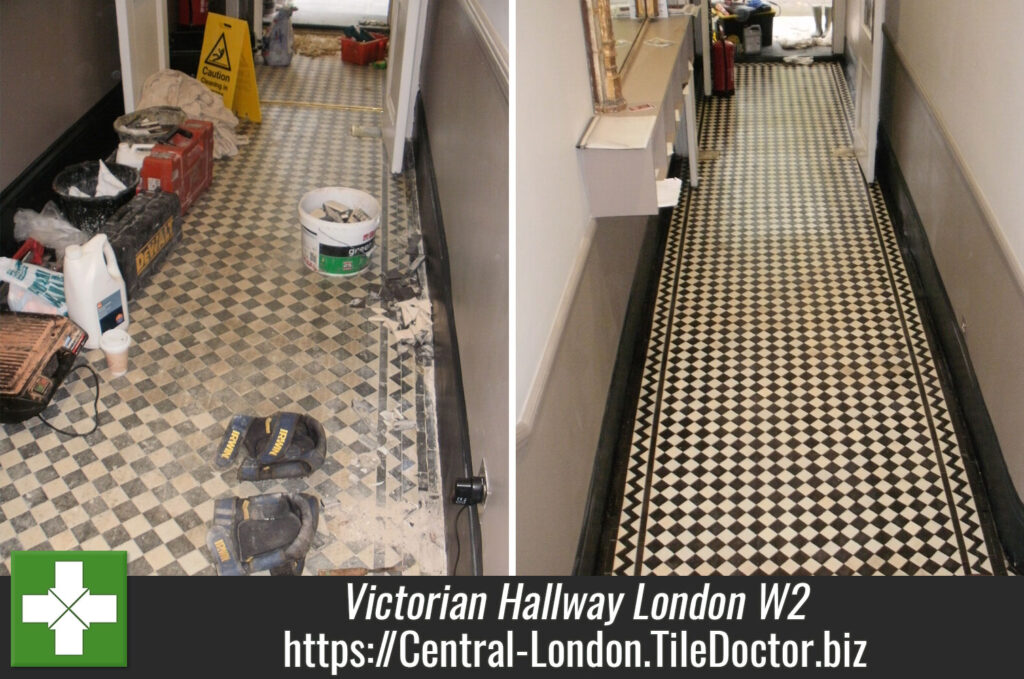This large entrance hall tiled in Victorian black and white floor tiles in London W2 had been quite badly damaged in the past by having a carpet glued and nailed on to it. Many tiles were broken or missing and those missing had been replaced by cement.

Cleaning a Victorian Floor
On the first day of this three day job I removed the cement filling and extracted the nails that remained in the floor. I then stabilised the exposed area with a PVA solution before replacing the missing tiles with replica or salvaged ones to match the floor was swept out and vacuumed to remove all loose debris.
On the second day I cleaned the floor, removing the old carpet glue with Tile Doctor “Remove and Go” which was left to dwell onto the tile for a while to allow it to soak into the tile and break down the adhesive; this was then removed with a wet vacuum. The next step was to clean the tiles using Tile Doctor Pro-Clean which was worked in with a black srubbing pad to scrub the cleaning solution into the tile and finish off the cleaning process, again the soiled solution was removed with a wet vacuum. Normally by now the floor would of have been clean however In this case the levels of soaked-in old glue and ground-in dirt from decades of use were such that the floor also required steaming, scraping and wire brushing with a Spid brass wire brush before a final clean with another round of Pro-Clean and a black buffing pad fitted to a Numatic buffing machine. This had the desired affect and the last step was to wash the floor down with clean water to remove any remaining chemicals etc.
Sealing a Victorian Floor Sealing
After leaving the floor to dry overnight I came back the third day to seal the floor using four coats of Tile Doctor Seal and Go which is ideal for Victorian tiled floors as it leaves a low sheen finish whilst providing excellent stain protection.


You did well to find a supplier for those small format Victorian tiles most are usually larger.